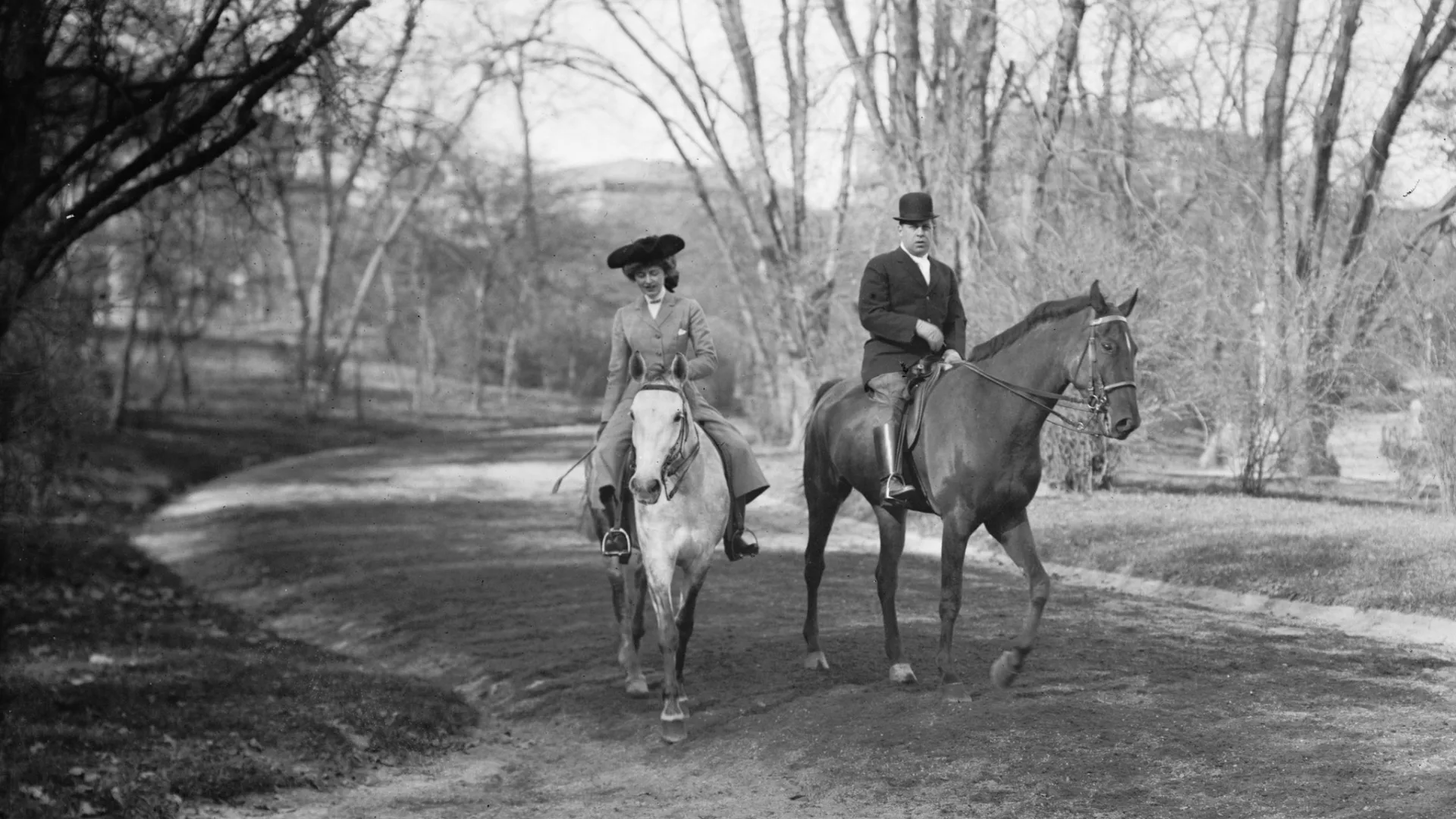Central Park in New York City is a beloved oasis of greenery in the midst of towering skyscrapers. It is a place where visitors and locals alike come to escape the hustle and bustle of city life. Yet, few people today are aware of the park’s rich equestrian history, which lives on in the forgotten horse trails and pads that crisscross the park’s landscape. As the city moved away from horse-drawn carriages and Hanson cabs, these horse trails were left behind, but they are still there for those who know where to look. Join us as we explore the history of horses in Manhattan and how its treatment led to the formation of the humane society and the ASPCA. We’ll also give you some tips on how to discover these hidden gems and explore Central Park like a true horseback rider!”
from the movie Hair
Horses in Manhattan have a rich and storied history. In the early days of the city, before the advent of motor vehicles, horses were the primary mode of transportation. They were used for everything from farming to delivering goods and people around the city. By the mid-19th century, horse-drawn carriages and wagons were a common sight on the streets of Manhattan, and Central Park’s horse-drawn carriages were iconic. However, the treatment of these animals led to their widespread abuse and suffering. This led to a group of concerned citizens coming together to form the American Society for the Prevention of Cruelty to Animals (ASPCA) in 1866.

Central Park was designed with horses in mind. The park’s original designers, Frederick Law Olmsted and Calvert Vaux, were themselves avid horsemen and understood the importance of maintaining well-tended horse trails. The park was created with miles of these trails, which allowed the city’s horse-riding community to explore its natural beauty on horseback. Unfortunately, as the city moved towards the use of automobiles, these trails became less and less utilized, to the point where some of them have been all but forgotten.
If you’re interested in exploring the horse trails of Central Park, there are a few things you should keep in mind. First, Central Park does not rent horses, so if you want to explore on horseback, you will need to bring your own horse or sign up for a guided tour with one of the many equestrian centers located throughout the city. These tours typically last around an hour and will take you along some of the park’s most scenic trails, giving you a glimpse of the park’s natural beauty from a different perspective.




Historical maps of the bridal path
As you explore Central Park’s forgotten horse trails, keep an eye out for some of the park’s most iconic sights. From the park’s many lakes and ponds to its rolling hills and expansive meadows, you’ll discover a whole new world of beauty that most park visitors never get to experience. Be sure to take your time and appreciate the natural wonders that abound in this beloved green space.
Central Park’s forgotten horse trails are a hidden gem waiting to be rediscovered. They offer a unique perspective on the park’s rich history and natural beauty, and are a great way to get away from the hustle and bustle of city life. Whether you’re a history buff, a seasoned horseback rider, or a visitor to the city looking for something new and interesting to explore, the horse trails of Central Park are definitely worth checking out. So saddle up and get ready to experience the magic of Central Park like never before!
Some of the must-see sites along Central Park’s horse trails include:
- The iconic Bethesda Fountain, located in the heart of the park.
- The tranquil Jacqueline Kennedy Onassis Reservoir, offering stunning views of the city skyline.
- The picturesque Bow Bridge, a popular spot for wedding proposals and romantic walks.
- The rustic charm of Belvedere Castle, a popular spot for birdwatchers and nature enthusiasts.
- The beautiful Strawberry Fields, a tribute to John Lennon and a peaceful oasis in the bustling city.
- The scenic Shakespeare Garden, filled with colorful flowers and plants mentioned in the Bard’s plays.
- The vibrant Turtle Pond, home to various species of turtles and waterfowl.
- The historic Carousel, a favorite among children and adults alike.
- The stunning Conservatory Garden, featuring intricate flower displays and serene walking paths.
- The iconic Central Park Zoo, home to a variety of animals from around the world.
Explore these sites and more along Central Park’s forgotten horse trails for a truly unforgettable experience. So why wait? Plan your visit today

